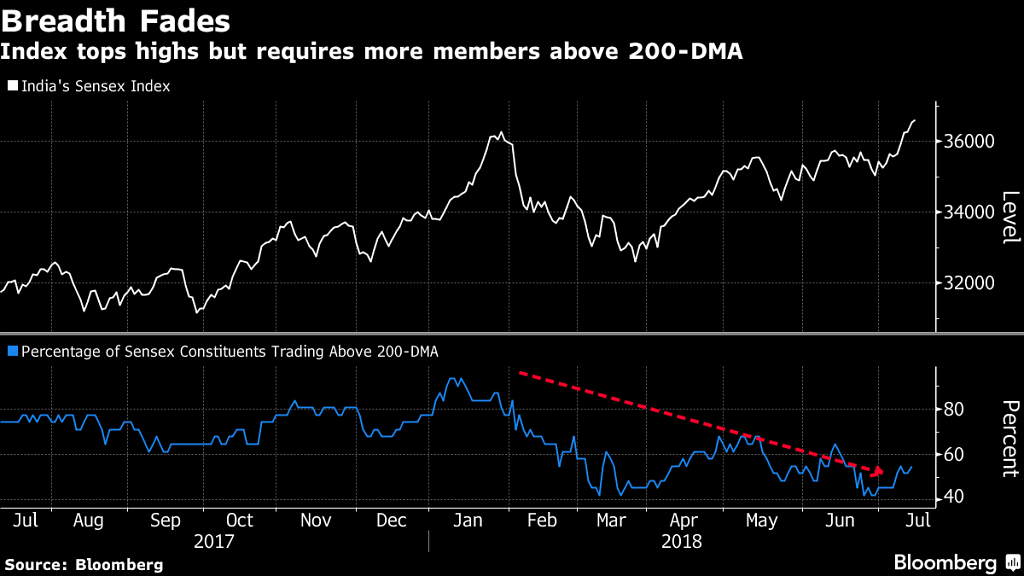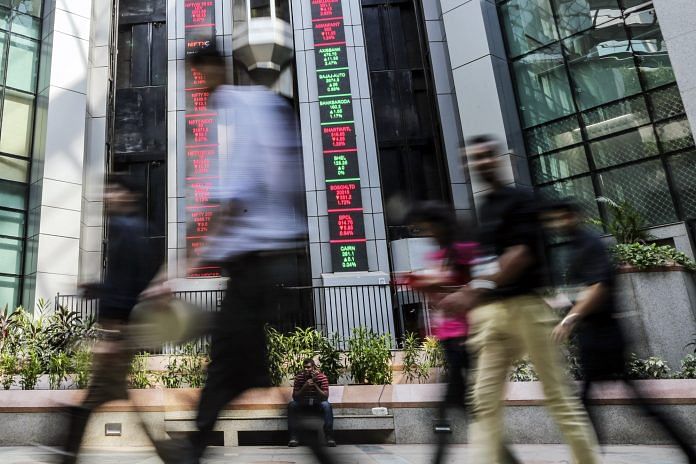Investors are seeking safety in bigger companies amid a brewing trade conflict and elevated prices of oil.
India may be Asia’s best-performing major market this year, but not everyone is rejoicing the return of the nation’s benchmark gauges into record territory.
A peek under the hood of the S&P BSE Sensex gauge’s 7.3 per cent gain this year shows it’s being dominated by three stocks – Tata Consultancy Services Ltd., Reliance Industries Ltd. and HDFC Bank Ltd. A little over half of the 30 Sensex stocks are trading higher than their 200-day moving average price, down from 94 per cent in January when the gauge peaked.
Gains have been lopsided as investors sought safety in the biggest stocks amid headwinds from a brewing trade conflict and elevated prices of oil, India’s top import. A sell-off in mid- and small-cap stocks – made worse by stringent margins imposed in June – has left smaller firms trading near the biggest price discount to the Sensex since July 2016, data compiled by Bloomberg show.
“Sensex at a new high while the broader market is nowhere near suggests that the market has been very discerning in picking winners,” said Sanjiv Bhasin, an executive vice president at Mumbai-based brokerage India Infoline Ltd.
The Sensex has jumped 12 per cent from its March low to become the first among major benchmark Asian equity gauges to rebound from a correction this year. The recovery has been fueled by the persistent buying by local mutual funds and optimism about corporate earnings for the June quarter. The S&P BSE MidCap Index, in contrast, is down 13 per cent this year after hitting multiple records in 2017.

Big Bracket
Shares of Reliance have risen more than 19 per cent this year to a record, helping company helmed by billionaire Mukesh Ambani reclaim the $100 billion milestone for market value last week after more than a decade. Asia’s top software exporter Tata Consultancy Services, which crossed this threshold in April, has surged 47 per cent since Jan. 1.
HDFC Bank has rallied 16.5 per cent in 2018 to a record, valuing the world’s most expensive major lender at $83 billion.
Gains in the large caps should soon spread out to the broader market, now that oil prices have begun to decline, India Infoline’s Bhasin said. Foreign outflows of about $700 million from domestic shares this year have been “relatively better” than the billions of dollars that have been pulled from markets including Indonesia, Malaysia, Philippines and South Korea, he said.
“After a correction, the rally starts thin and then spreads out as conviction builds,” he said. “Flows will strengthen after oil falls further. As soon as we see stability, midcaps will join the party. It is typical of a bull market. “- Bloomberg






